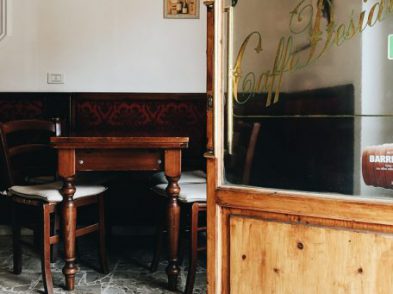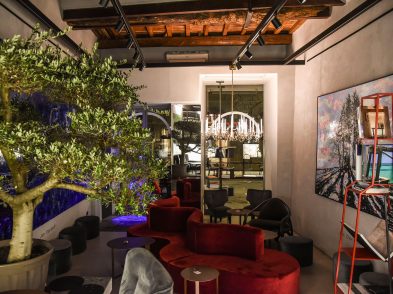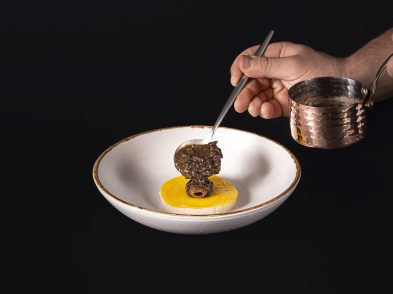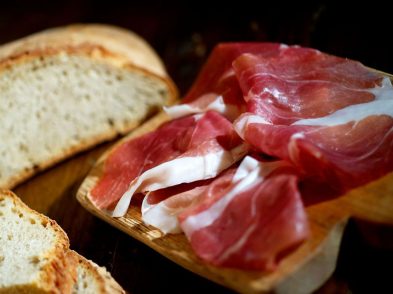The
saucepans were overturned-to paraphrase biographer Jean Orieux-in 1533 when
Catherine de’ Medici arrived in Paris as the 14-year-old Florentine bride of
Henry II, the future king of France. What Orieux was referring to in his
biography of Catherine de’ Medici was the Tuscan cuisine that sheinsisted on
serving in her French court. Not only did she introduce dishes and vegetables
that were to become the staples of modern French cuisine, but she even brought
manners to the table, starting with the fork.
Until the sixteenth
century, most European table settings included only spoons and knives. In
France, there were often only communal knives. A fork was considered an
unnecessary and even effeminate luxury when one had fingers.
In the Middle Ages, food was cooked
in just two ways: boiled or roasted. Think thick medieval gruels, much like a
Tuscan pappa, or whole roasted
beasts, with meat and vegetables usually cut into convenient ?finger size’
pieces or even mashed before serving (teeth were not of the healthiest
standards), so that much of what was eaten was easily managed with hands and
perhaps a spoon-no fork necessary.
The English word ?fork’ and its
Italian counterpart, forchetta, both come from
the Latin word for a pitchfork, furca, a correlation
that perhaps delayed its entry into table etiquette by a couple of centuries.
The first forks, likely used in ancient Greece and Rome, had just two tines,
much like today’s carving fork. They began re-appearing in Europe via Tuscany
and Venice around the eleventh century. It wasn’t until the Renaissance,
however, that fork-use in Italy was in full swing, with its epicentre in
Florence, the most culturally advanced city in the Western world.
Florentine paintings such as
Botticelli’s Nastagio
degli Onesti show that forks were a commonplace habit at the time. Commissioned by
Lorenzo the Magnificent as a gift for the Pucci family in 1483, the work
consists of four large panels depicting one of the heroes of Boccaccio’s Decameron. The fourth and
last panel is still in the Pucci family private collection and depicts the
well-dressed guests of Nastagio’s wedding banquet dining with forks.
By the sixteenth century the fork was
a staple of Italian table etiquette, but it still took some time for it to
catch on in the rest of Europe. In 1611 when an Englishman brought over a fork
that he had seen on his travels in Italy, there was wild opposition to its use:
it’s pitchfork-likeness was enough to cause uproar amongst clergymen who
believed that God’s food should be touched only by human fingers. It was a
habit not fully accepted in English society until as late as the eighteenth
century.
The French, on the other hand, caught
on to the fork a little earlier than the English, perhaps because of the
gastronomic trendsetter that Catherine de’ Medici was. The forks, like
Florentine sorbetto, were initially
adopted only by the wealthy, following suit from the fact that the Royal French
court were using them.
Forks were even created from
beautiful materials from bronze to ivory, luxurious objects in their own right.
For example, in Florence’s Bargello Museum, the Sala degli Avori (?Ivory Room’)
houses some wonderful examples of antique Italian cutlery, including an ivory
and iron cutlery set of a knife and a folding fork. This special cutlery was
carried in a little box known as a cadena by the individual
who was to use it; the members of Catherine’s entourage were known to carry
them.
The French table was changing, and as
Catherine transformed everything from the orders of the dishes at a meal-no
longer was everything from dessert to roasts to be brought out at the same
time-and separated sweet from salty, so, too, did she change the appearance of
the dishes at the table. With a complete set of cutlery for each person at the
table, food could be served in larger pieces, to be cut and eaten delicately.
Small bites of food were picked up by the tines of a fork rather than by
stained hands.
As the Italian trend spread, the next
century saw forks popping up on wealthy tables throughout France and Spain,
then gradually to northern Europe. Catherine, that stubbornly Tuscan buona forchetta, had changed
French cuisine forever, beginning with what the great French chef, Raymond
Oliver, called the Revolution of 1533-her arrival in Paris.







